
Butch Cassidy's Wild Bunch was one of the loosely organized outlaw gangs operating out of the Hole-in-the-Wall, near Kaycee in Wyoming, a natural fortress of caves, with a narrow entrance that was constantly guarded. In the beginning, the gang was referred to as the "Hole in the Wall Gang" during the Old West era in the United States. It was popularized by the 1969 movie, Butch Cassidy and the Sundance Kid, and took its name from the original Wild Bunch. The gang was led by Butch Cassidy, and it included his closest friends Elzy Lay, the Sundance Kid, Tall Texan, News Carver, Camilla "Deaf Charley" Hanks, Laura Bullion, Flat-Nose Curry, Kid Curry, and Bob Meeks. They were the most successful train-robbing gang in history.
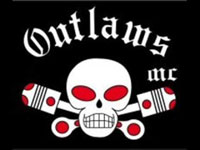
The Outlaws Motorcycle Club, incorporated as the American Outlaws Association or its acronym, A.O.A., is an international outlaw motorcycle club. Founded in McCook, Illinois in 1935, the Outlaws MC is the oldest outlaw biker club in the world. With 275 chapters located in 23 countries, and a membership of over 3,000, the club is also the third-largest in the world, behind the Hells Angels and the Bandidos.

Wild West C.O.W.-Boys of Moo Mesa is a 1992–1993 American animated television series created by comic book artist Ryan Brown, known for his work on Teenage Mutant Ninja Turtles. It aired as part of ABC's Saturday morning lineup.

Hell's Angels: The Strange and Terrible Saga of the Outlaw Motorcycle Gangs is a book written by Hunter S. Thompson, published in 1967 by Random House. It was widely lauded for its up-close and uncompromising look at the Hells Angels motorcycle club, during a time when the gang was highly feared and accused of numerous criminal activities. The New York Times described Thompson's portrayal as "a world most of us would never dare encounter."

The Wild Angels is a 1966 American independent outlaw biker film produced and directed by Roger Corman. Made on location in Southern California, The Wild Angels was the first film to associate actor Peter Fonda with Harley-Davidson motorcycles and 1960s counterculture. It inspired the biker film genre that continued into the early 1970s.

The Rebel Rousers is a 1970 American independent outlaw biker film starring Cameron Mitchell, Jack Nicholson, Diane Ladd, Bruce Dern, and Harry Dean Stanton. Filmed in 1967, it did not receive a release until 1970 following the success of Easy Rider. It is one of several motorcycle gang films of the period to feature Nicholson, Dern and Stanton. The film was co-written, produced and directed by Martin B. Cohen in his only directorial effort.

Bandolero! is a 1968 American Western film directed by Andrew V. McLaglen and starring James Stewart, Dean Martin, Raquel Welch and George Kennedy. The story centers on two brothers on the run from a posse, led by a local sheriff who wants to arrest the runaways and free a hostage that they took along the way. They head into the wrong territory, which is controlled by "Bandoleros".
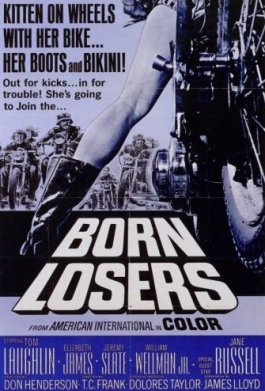
The Born Losers is a 1967 American outlaw biker film. The film introduced Tom Laughlin as the half-Indian Green Beret Vietnam veteran Billy Jack. Since 1954, Laughlin had been trying to produce his Billy Jack script about discrimination toward American Indians. In the 1960s he decided to introduce the character of Billy Jack in a quickly written script designed to capitalize on the then-popular trend in motorcycle gang movies. The story was based on a real incident from 1964 where members of the Hells Angels were arrested for raping two teenage girls in Monterey, California. The movie was followed by Billy Jack (1971), which saw AIP pull out of production midway through before others stepped in.
The outlaw biker film is a film genre that portrays its characters as motorcycle riding rebels. The characters are usually members of an outlaw motorcycle club.
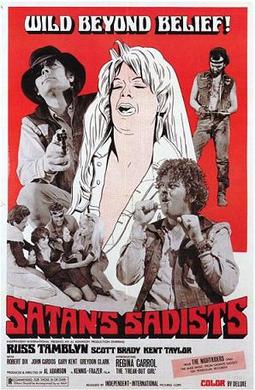
Satan's Sadists is a 1969 American outlaw biker film directed by Al Adamson and starring Russ Tamblyn.

Class of 1999 is a 1990 American science fiction thriller film directed by Mark L. Lester. It is the director's follow-up to his 1982 film Class of 1984.

The Vagos Motorcycle Club, also known as the Green Nation, is a one percenter motorcycle club formed in 1964 in San Bernardino, California. The club's insignia is Loki, the Norse god of mischief, riding a motorcycle. Members typically wear green.
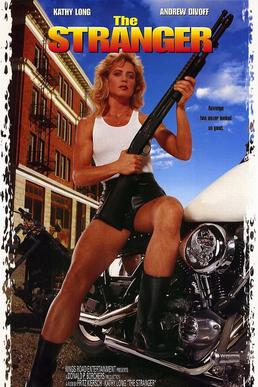
The Stranger is a 1995 American martial arts action thriller film directed by Fritz Kiersch and starring former professional kickboxing champion Kathy Long. The plot of the film is based on the premise of the Clint Eastwood classic film High Plains Drifter (1973) transposed onto a biker subculture.
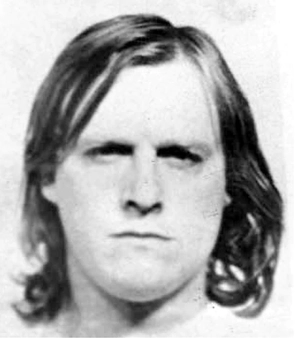
Yves "Le Boss" Buteau was a Canadian outlaw biker and gangster, known for being the first national president of the Hells Angels Motorcycle Club in Canada. Buteau began his life of organized crime as a member of the Montreal-based Popeyes biker gang and, by the mid-1970s, he became the club's president. He was instrumental in the Popeyes' merger with the Hells Angels in 1977, and played a significant role in establishing the Angels as a major criminal force in Quebec. In 1983, Buteau was murdered by a drug dealer with ties to a rival gang, the Outlaws.
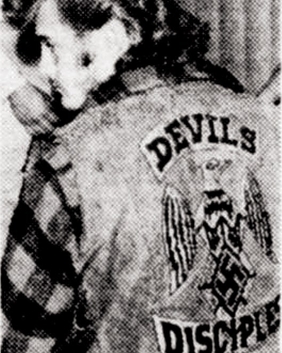
The Devil's Disciples Motorcycle Club was a Canadian outlaw motorcycle club based in Greater Montreal. Originating in late 1965, the club achieved a short-lived prominence in Montreal and was, for a time, the most powerful motorcycle gang in the city before disbanding in January 1976 as a result of a biker war with the Popeyes, a rival outlaw biker club that would eventually become the first Hells Angels chapter in Canada. The Devil's Disciples gained additional infamy for their assassination attempt on famed French singer-songwriter Johnny Hallyday as well as an internal conflict amongst its members which led to several murders.

Michael Vincent O'Farrell, nicknamed "Irish", was an American outlaw biker and gangster who served as the vice-president and acting president of the Oakland, California, chapter of the Hells Angels Motorcycle Club (HAMC). O'Farrell was alleged by law enforcement officials to be the second-in-command to Sonny Barger, the reputed international president of the Hells Angels. During the early-mid 1980s, he deputized for Barger, serving as the Oakland chapter president and de facto international leader of the Hells Angels, while Barger recovered from a throat operation for cancer. O'Farrell was murdered in a bar fight in 1989 shortly before he was due to start serving a prison sentence for conspiring to bomb the clubhouse of a rival motorcycle gang, the Outlaws.
The Satan's Choice–Popeyes War was the first major outlaw motorcycle club conflict in Canada's history, involving the country's two largest Motorcycle Clubs; the Satan's Choice from Ontario, and the Popeyes from Quebec. The conflict lasted from 1974 until 1976 and saw the two motorcycle clubs battle for dominance in the country. The conflict misleadingly known in Canada as the "First Biker War" would begin a year later in 1977.

The Dirty Dozen Motorcycle Club (DDMC) was an outlaw motorcycle club in Arizona. Founded in 1964, the Dirty Dozen became the preeminent motorcycle gang in the state, and ultimately merged with the Hells Angels in 1997.
















